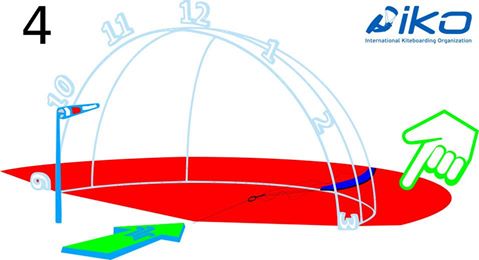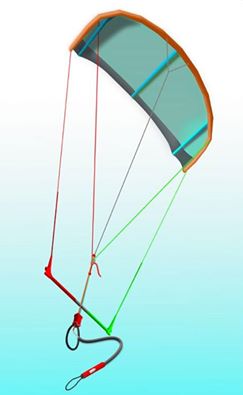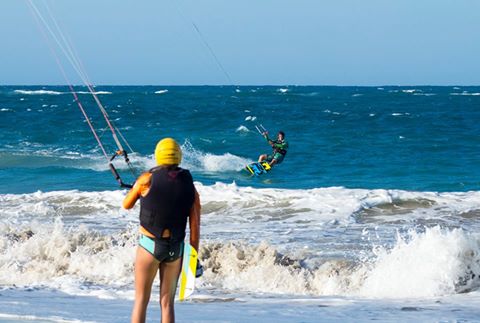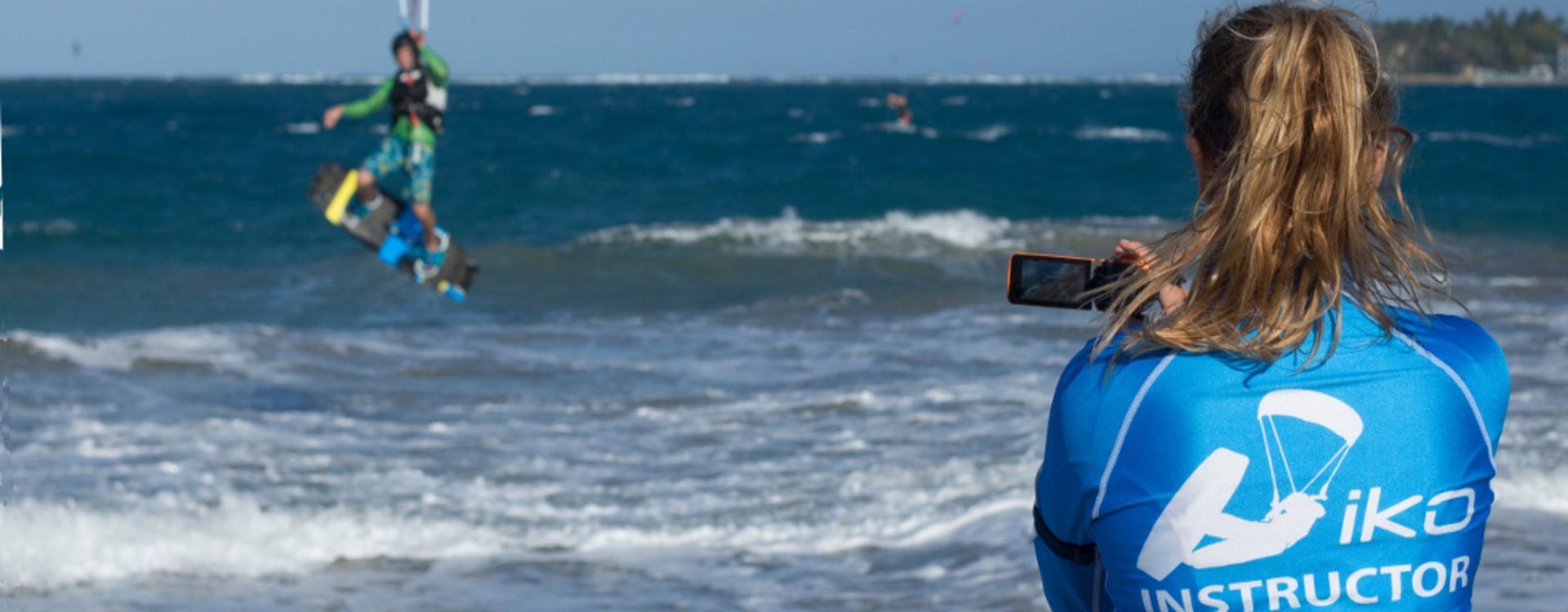|
The drop zone The drop zone is located under the wind window. The drop zone must be kept clear of any obstacle for the rider’s safety and others’. Do you know how to calculate it? The drop zone is anywhere underneath the wind window where the kite can drop, plus the size of the leash in extension and the size of the kite span in the case the rider releases the chicken loop quick release. This means that for a 12 m kite on 25 m lines, the diameter of the drop zone will be around 60 m!!! This is one of the reason why IKO uses short lines to teach beginners. |
 |
The safety zoneThe safety zone corresponds to 3 lines length. This is the area beyond the drop zone that a pilot keeps clear of any obstacles because it takes time and distance to stop a kite. When the wind is stronger, the size of the safety zone should be increased. A cautious kiteboarder should also keep a safety zone upwind of him and not let another kiter get too close. |
|
Advantages and inconvenient of the 5th lineThe biggest advantage of a 5th line is its safety system, like the 4 line re-ride, this safety system allows the rider to properly release most of the kite’s power in any situation. If checked often and looked after it will always be a safe companion for the riders who use it. Another advantage is to allow the rider to relaunch easily a C-Shape kite that would be almost impossible to do without it. However it has a main disadvantage that makes it a system only recommended for Advanced riders; if the kite turns on itself, the 5th line will wrap around the kite. In this situation if the rider does not react fast by releasing the quick release this may damage the kite. |
 |
Right of way - rulesWould you drive a car without knowing the right of way rules? The answer is no! The same logical applies to kiteboarding. Spots are every time more crowded and kiters travel a lot. It is important to have a common language to make the session safer and more enjoyable. There are many rules, but always remember that the kiter with the most manoeuvrability must give way to the other one or other beach users, exception made to the Starboard rider who has the ROW over the others. If you are not sure about this rules, have a look at the Kiteboarder's Handbooks and ask your nearest IKO Affiliated Center. |
 |

